Wildfires, like the ones ravaging Australia now and those seen in California in recent years, are a serious and growing threat. While we typically think of them as a natural phenomenon caused by lightning or sparked by other environmental factors, human-caused wildfires have become more of an issue than ever before.
This article will explore the root causes of wildfires and what we can do to prevent them. By examining the causes and discussing potential solutions, we can work towards minimizing their impacts on our environment, wildlife, homes, and lives.
The Delicate Balance: Wildfires and Ecosystem Interplay
The balance between land and life has been an enduring story of the Earth. As ecosystems adapt and evolve, so too do the challenges that face them. Among these challenges, wildfires have emerged as a powerful and often destructive force. The interplay between wildfires and the ecosystems they touch is multi-faceted, encompassing not just nature, but human interaction and influence as well.
How Ecosystems Influence Wildfire Behavior
1. The Role of the Land and Causes of Wildfires
Interestingly, not all regions experience wildfires equally. Hawaii, despite not being historically associated with wildfires, now faces a growing threat. One of the main causes of wildfires in Hawaii is largely due to climate change and mismanaged land. In contrast, California’s specific set of conditions, including its dry climate and vast stretches of dried vegetation, are direct causes that make it a prime candidate for wildfires.
2. Forest Floor Dynamics as a Cause of Wildfires
The forest floor plays a significant role in the causes of wildfires. It can act both as a fire suppressant and an accelerator. Accumulated debris on the forest floor can provide abundant fuel for fires, allowing them to spread rapidly, becoming one of the major causes of large-scale wildfires. However, sustainably managed forests that prioritize clearing this undergrowth can significantly diminish the wildfire risk.
We need healthy forests if we want to protect our climate. As the climate changes, forests become more vulnerable to insect outbreaks, droughts, and wildfires”
Chris Noth
3. Ecosystem Adaptations and Their Connection to the Causes of Wildfires
Many ecosystems have evolved with fire as a natural component, influencing the causes of wildfires. Some species even rely on fire for germination. However, the frequency and intensity of these fires are crucial factors in determining their impact. Natural, low-intensity fires can rejuvenate the land, while high-intensity fires, which are among the main causes of ecosystem devastation, can devastate it.
Human Impact on Wildfire-Ecosystem Dynamics
1. Equipment and Infrastructure: Causes of Wildfires
Equipment malfunctions, often stemming from human error or negligence, emerge as significant causes of wildfires. A mere spark from a malfunctioning chainsaw or power tool can ignite vast terrains. The relationship between equipment, particularly electrical ones, and the natural environment underscores the importance of rigorous safety and maintenance protocols to prevent these causes of wildfires.
2. Urban Encroachment: A Leading Cause of Wildfires
As urban spaces encroach upon traditionally wild areas, the boundary between urbanized regions and wildland becomes less distinct. This intermingling escalates the risk of wildfires affecting these expanding communities. Simultaneously, it amplifies the chances of human activities inadvertently becoming primary causes of wildfires in these regions.
3. Acts of Arson: Intentional Causes of Wildfires
One of the most disconcerting human influences on wildfires is arson. These intentional causes of wildfires not only jeopardize ecosystems but also imperil properties, entire communities, and countless lives.
The Silver Lining: Learning and Adaptation
1. Harnessing Technology for Protection
With advancements in technology, communities are now better equipped to predict, monitor, and combat wildfires. Satellite imagery, early warning systems, and enhanced communication tools play a pivotal role in safeguarding communities and ecosystems from the causes of wildfires. These technological tools help in identifying potential fire-prone areas, understanding the common causes of wildfires, and devising strategies to mitigate them.
2. Celebrating Nature Responsibly
Humans have an innate desire to connect with nature. Celebratory occasions, like summer outings with hot dogs and s’mores, become memorable experiences. However, understanding the causes of wildfires, local weather conditions, and restrictions can ensure these celebrations don’t inadvertently harm the environment or ignite a fire. Being mindful of the surroundings and potential fire hazards can make a significant difference.
3. Community Engagement and Education
Knowledge empowers communities. Understanding the intricacies of wildfire, the causes of wildfires, and ecosystem changes allows communities to coexist harmoniously with nature. By respecting burning ordinances, practicing safe equipment usage, and raising awareness about the leading causes of wildfires, communities can significantly reduce wildfire risks and protect both human and natural habitats.
The dance between wildfires and ecosystems is intricate. While wildfires can be a natural part of many ecosystems, the current scale and frequency, often exacerbated by the causes of wildfires and human influence, are concerning. By recognizing the delicate balance between human activities, equipment, and the natural environment, we can aspire to a world where ecosystems thrive, and communities remain safe.
What Causes Wildfires?
When it comes to wildfires, there are two main categories: naturally occurring fires and human-caused fires. According to the National Park Service, most wildfires are caused by humans, with about 85-90% of fires caused by people.
Wildfires can happen naturally, like if the sun’s heat or a lightning strike sets something ablaze. But, more often than not, humans are responsible for starting these fires – leaving a campfire unattended, flicking a cigarette butt into the grass, or even deliberately starting a fire.
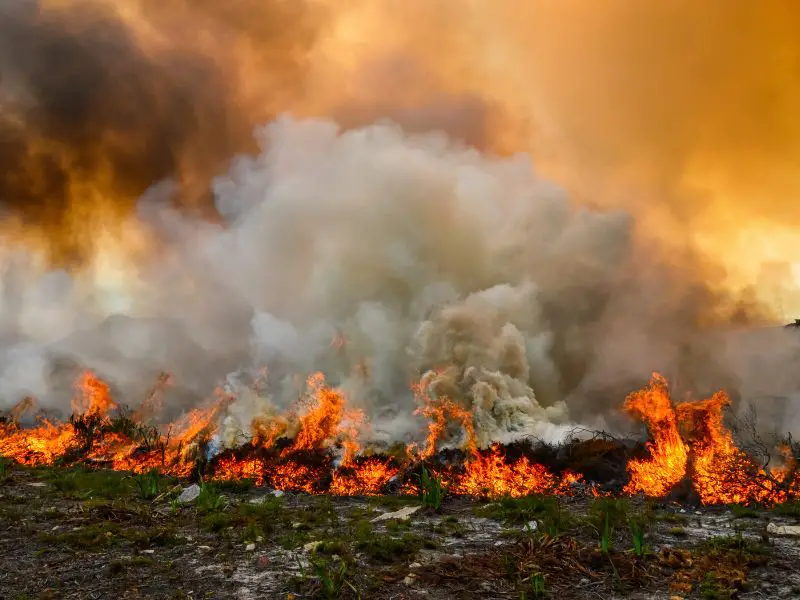
Human carelessness tends to be the most significant factor contributing to wildfires. But no matter what causes a wildfire, it needs three things to get started and keep going: fuel, heat, and oxygen. They often refer to these components as the “fire triangle.” Heat can come from a lot of different sources, including many that are caused by human activity. Strong winds can fan the flames and spread embers, making wildfires even more devastating. These factors combine to create an environment where a single ember can quickly turn into a massive, destructive fire.
Fire happens when a fuel source – like trees, grass, or even a house – gets hot enough to ignite. This occurs when the heat brings the fuel to its flash point, the lowest temperature at which it can catch fire. Once the fuel is burning, it needs oxygen from the air to keep going – and that’s where the third component of the fire triangle comes in. So, you must remove at least one of these components to put out a fire. That’s the only way to stop the chemical reaction that causes combustion and keeps the fire burning.
Human Causes of Wildfires
Wildfires aren’t always the result of natural causes. Humans are often the ones responsible for starting them. So, if you’re out in the great outdoors, remember to be accountable – because even the slightest human error can lead to a massive blaze. Here are some of the most common ways human actions can result in devastating wildfires.
1. Burning Debris
The burning of debris is one of the most common causes of wildfires. The wind can carry stray embers for several miles and, if they encounter dry vegetation or other flammable materials, can quickly cause a wildfire. Extreme caution must therefore be exercised when burning debris.
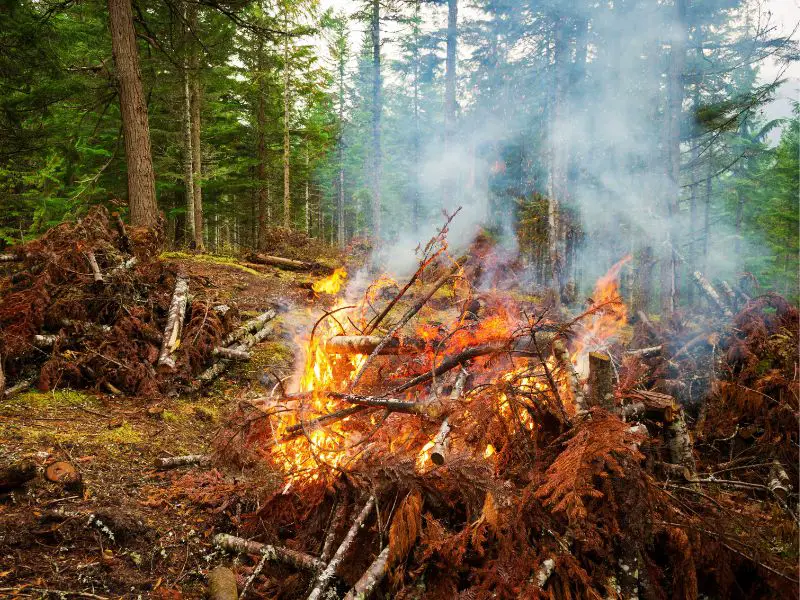
2. Irresponsible Campfires
Irresponsible campfires are one of the leading causes of wildfires. If a campfire is not managed correctly and left unattended, it poses a significant risk.
The wind, ever unpredictable, can easily pick up and carry embers from these unsupervised fires to nearby flammable materials like dry leaves or grass. Such events quickly escalate, leading to the causes of wildfires within mere minutes. It is of utmost importance that anyone lighting a campfire understands the potential causes of wildfires and takes the necessary precautions to prevent them.
Designated fire pits or rings should be the only places where campfires are made to minimize the causes of wildfires. Continuous supervision of the campfire is crucial.
To further prevent the causes of wildfires, campers must ensure that they fully extinguish their campfires before leaving the site. This can be achieved by pouring ample water over the fire and diligently stirring the ashes, ensuring no embers remain that could become potential causes of wildfires.
3. Unextinguished Cigarettes
Unextinguished cigarettes are among the leading causes of wildfires. Unfortunately, many individuals overlook this and are careless when discarding their cigarette butts, unaware of the role they play in the causes of wildfires. The danger intensifies when a burning cigarette is tossed out of a car window or onto dry vegetation, as it can immediately ignite and become the starting point of a massive wildfire.
Understanding the causes of wildfires is crucial for prevention. Therefore, individuals should be vigilant and ensure that their cigarette butts are completely extinguished before disposing of them in an approved receptacle. By taking these simple precautions, we can significantly reduce the causes of wildfires and protect our environment from catastrophic damage.
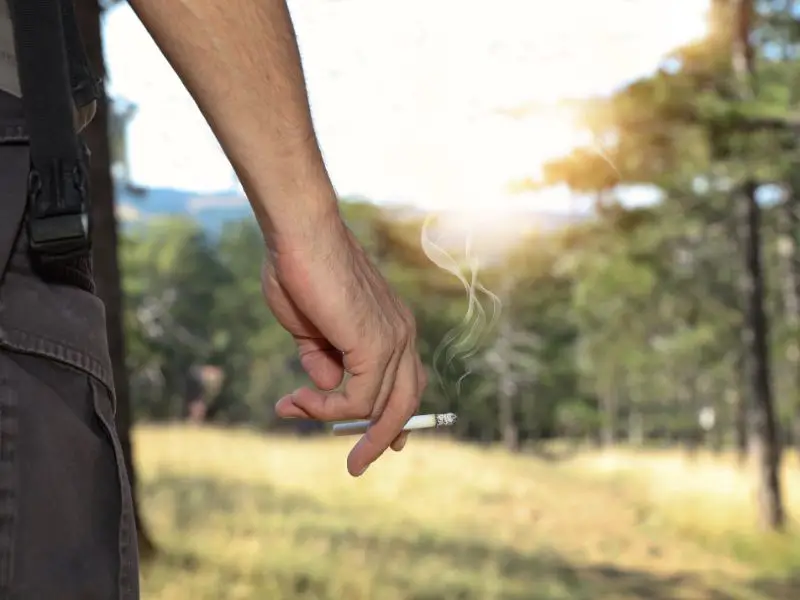
4. Vehicle Crashes and Malfunctions
Vehicle crashes and malfunctions are significant causes of wildfires. When vehicles malfunction or crash, they can unexpectedly result in wildfires, emphasizing the importance of regular maintenance and safe driving. Vehicles have numerous potential ignition sources, and understanding the causes of wildfires linked to them is crucial.
For instance, outdated exhaust systems can cause carbon to build up, leading to sparks and flames, making them one of the causes of wildfires. Improperly greased bearings are another example of how vehicle malfunctions can become causes of wildfires. If a vehicle is towing a trailer, the chains may drag and cause sparks, adding to the list of potential causes. Additionally, car accidents, which can result in fires, further highlight the myriad ways vehicles can contribute to the causes of wildfires.
5. Arson
It’s a tragic truth that the causes of wildfires often stem from human actions. Many wildfires aren’t just caused by carelessness but are started intentionally by people. This wrongful act of deliberately setting fires is a significant cause of wildfires and is termed as arson. Arson accounts for around a quarter of all wildfire causes in the U.S. annually.
Among the causes of wildfires, arson is particularly concerning as many arsonists are serial offenders. These individuals set multiple fires, contributing significantly to the causes of wildfires, before being apprehended by authorities. To combat this prevalent cause of wildfires, one of the most effective measures is to prosecute anyone seen initiating fires on purpose aggressively.
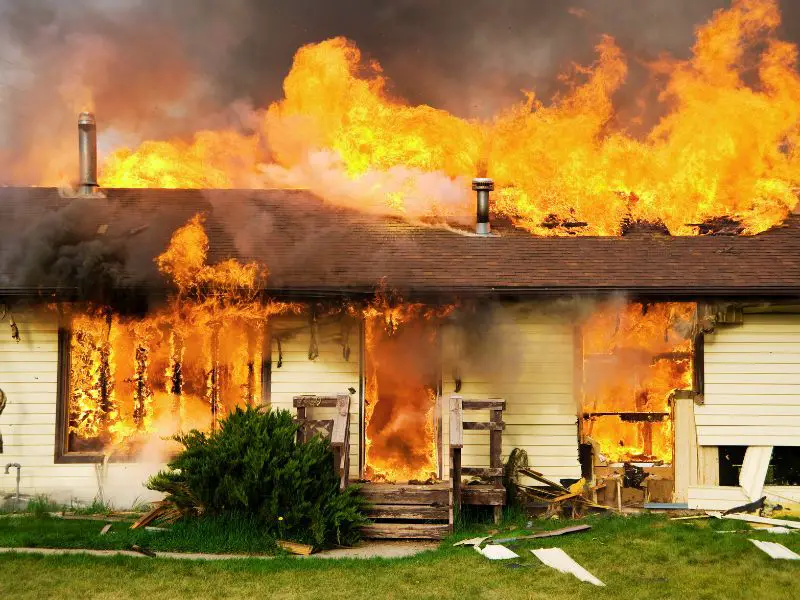
6. Climate Change
Climate change is a significant factor in the increase of wildfires worldwide. The rise in global temperatures and changes in weather patterns caused by climate change leads to drier and hotter conditions, creating the perfect environment for wildfires to ignite and spread.
One way climate change contributes to wildfires is by altering precipitation patterns. Droughts are becoming more frequent and severe in many parts of the world due to the changing climate. As a result, the vegetation becomes dry and susceptible to ignition. Additionally, higher temperatures can increase the evaporation rate, further drying out vegetation and making it more prone to combustion.
7. Monocultures
Monocultures are agricultural systems in which only one type of crop is grown over a large area. While this method can be efficient for producing a high yield of a particular crop, it can also increase the risk of wildfires. This is because monoculture tends to create a uniform and often dense landscape, which can act as a fuel source for fires.
When a wildfire starts in a monoculture field, the uniformity of the landscape means that the fire can spread quickly and efficiently across the entire area. The lack of diversity in the plant species also means there is less variation in the moisture content of the vegetation, making it more susceptible to ignition.
Related: Famous Climate Change Scientists, Climate Alarmism, Reforestation
Natural Causes of Wildfires
It’s a fact that human activity causes most wildfires, but natural events cause about 10 percent of them. This section will cover a few examples of natural events that can lead to wildfires.
1. Lightning
A few natural events can lead to wildfires, and lightning is one of them. Wildfires may sometimes start from long-lasting lightning bolts or strikes that ignite extremely dry debris. Sadly, there isn’t much we can do to prevent these kinds of wildfires from happening.

2. Volcanic Eruptions
Volcanic activity is another natural cause of wildfires. When hot liquid rock from a volcano, also known as lava, flows over vegetation, the intense heat can cause it to catch on fire and spread to form a wildfire. You can commonly see this type of wildfire in the Hawaiian Islands, where volcanic activity is more frequent.
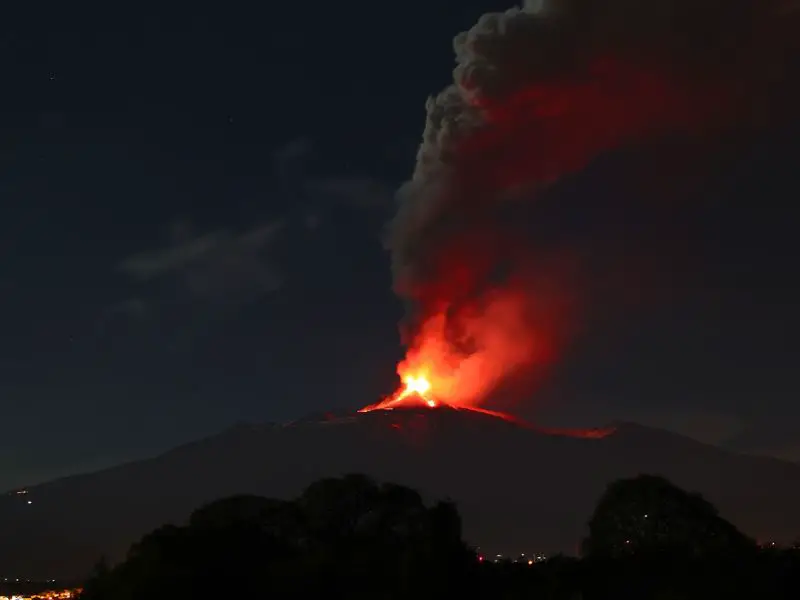
3. Droughts
Droughts are a natural phenomenon that can lead to devastating wildfires, which can have far-reaching consequences for both humans and wildlife. When rainfall is scarce and the soil becomes dry and brittle, the risk of wildfires increases significantly, as even a small spark can ignite the parched vegetation.
“Wildfires are a result of temperature conditions, of soil moisture conditions; and, of course, something has to start it”
John Holdren
As drought conditions persist, plants and trees become dehydrated and more susceptible to ignition. Even a small ember from a cigarette or a lightning strike can ignite dry vegetation, leading to a rapidly spreading wildfire. As the flames spread, they consume everything in their path, including homes, businesses, and natural habitats.
Frequently Asked Questions (FAQs)
Bottomline
Most wildfires are caused by human activity, such as unattended campfires, unextinguished cigarettes, burning debris, and intentional arson. However, we can prevent wildfires by carefully disposing of materials. By preventing wildfires, we can work towards preserving the environment and reducing the damage caused by these disasters.



;?>/smartquizbuilder/includes/images/sqb-registration-img.jpg)



